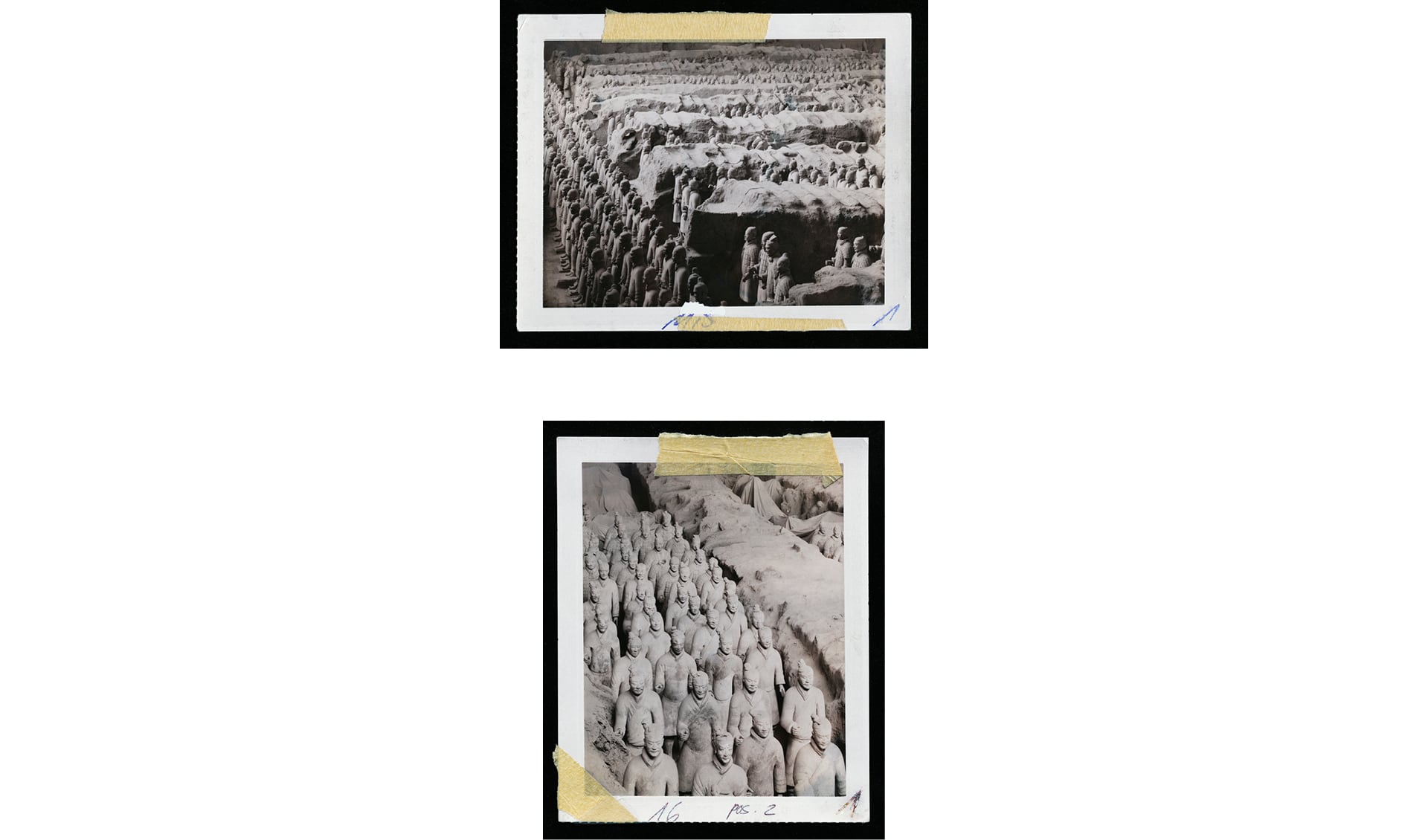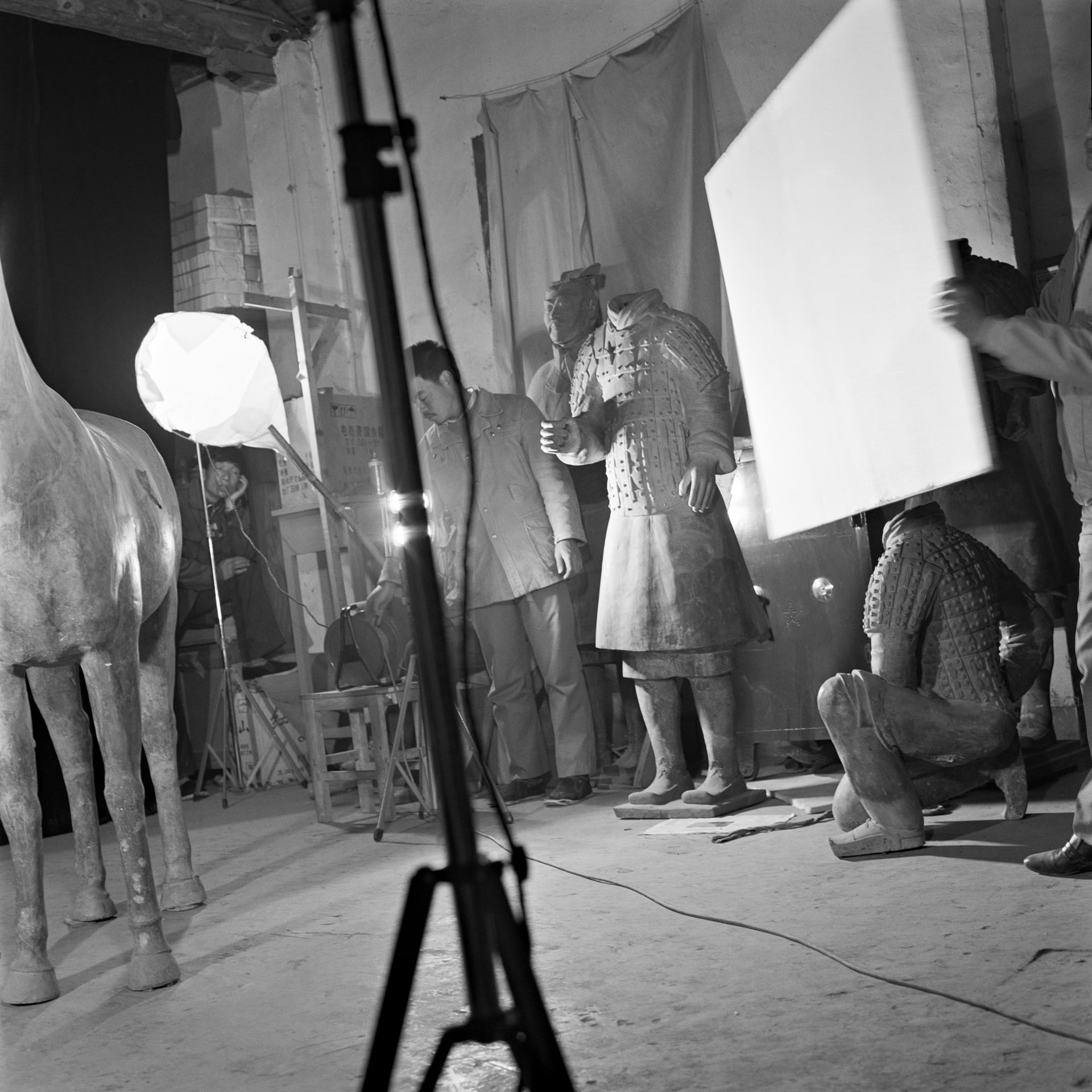1990
The Terracotta Army of Qin Shi Huangdi
What came to light in the vicinity of the tomb of China’s first emperor in the Lintong district near Xi’an in 1974 was an entire army of 7,000 lifesize terracotta figures—a combat legion complete with enough horses and chariots to protect Qin Shi Huangdi in the afterlife. Each soldier had an individual face and was signed by one of a whole army of laborers, allowing for the severest punishments if their work was found wanting. As future research would reveal, each of the tens of thousands of arrowheads found in the pit is made of exactly the same alloy and is exactly the same weight, thus providing evidence of the world’s first military-industrial complex.
Qin Shi Huangdi’s tyranny and rigorous legalism in 221 BCE brought the unification of the seven states and so put an end to the Warring States Period. The walls that separated them were razed and the first Great Wall encompassing a highly centralized empire that tried to standardize thought and burnt books to silence criticism was built. During the Great Leap Forward of the 1950s, Mao Zedong, another expert at dealing with criticism, refused to acknowledge comparisons with the First Emperor and boasted that he and his comrades had surpassed the deeds of Qin Shi Huangdi a hundredfold. The dynasty of the Qin—which gave China its name—ended in 207 BCE with the death of the First Emperor’s only son.
The photographs of the terracotta army itself in Lintong and all the other objects to be exhibited were commissioned by the Rheinisch-Westfälische Auslandsgesellschaft e.V., Dortmund.
Catalogue
Jenseits der Grossen Mauer. Der Erste Kaiser und seine Terrakotta-Armee, München 1990
Exhibition
Jenseits der Grossen Mauer. Der Erste Kaiser und seine Terrakotta-Armee, Museum am Ostwall, Dortmund 1990
Daniel Schwartz. Die Grosse Mauer Chinas, Museum am Ostwall, Dortmund 1990







